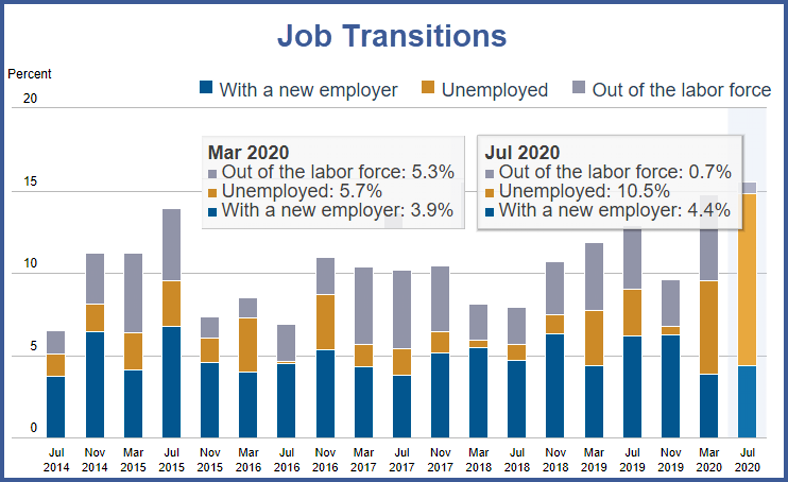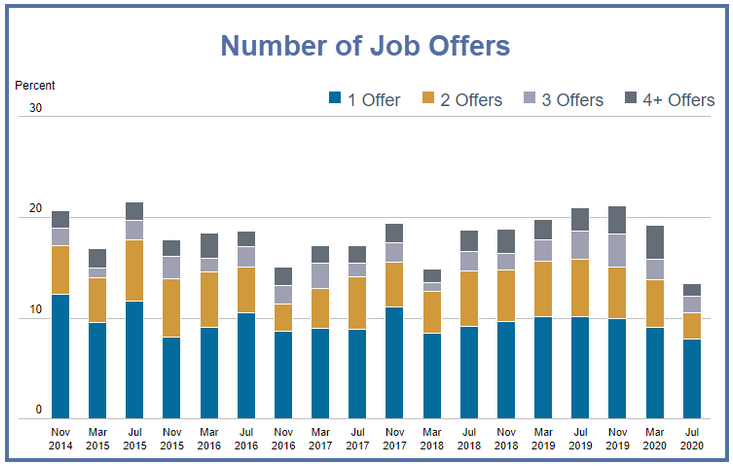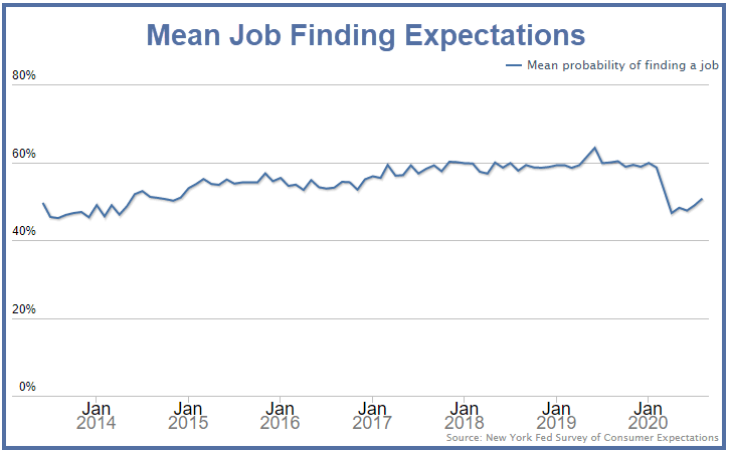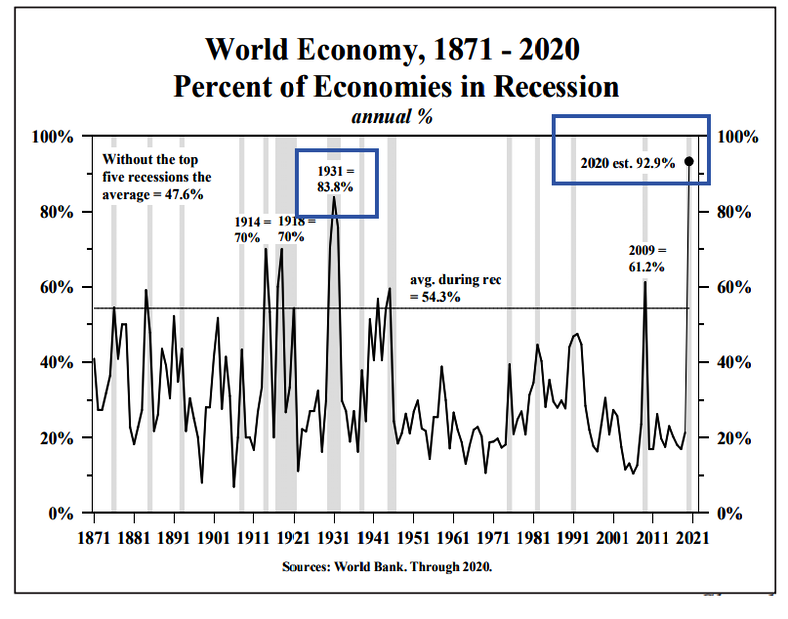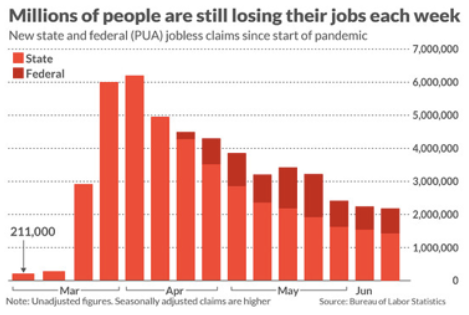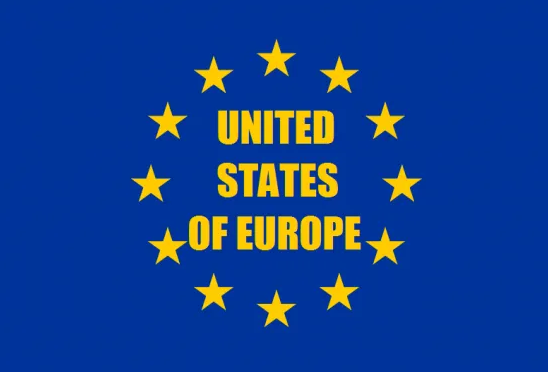A Fed survey of expectations shows that the consumer mood darkens on employment and job prospects. Job Transitions This chart shows the changes in employment status of respondents who were employed four months ago. The Fed survey asks individuals currently employed (excluding self-employment) whether they are working in the same job as when they submitted their last survey. If in the past four months they have answered that they now work for a different employer, they are classified as “With a new employer”, and otherwise they are “With the same employer”. Workers currently self-employed who were also self-employed four months ago are classified as “With the same employer”, and otherwise as “With a new employer.” Job Transitions, 2014-2020 - Click to enlarge
Topics:
Mike Shedlock considers the following as important: 9.) Real Investment Advice, 9) Personal Investment, Economics, Featured, newsletter
This could be interesting, too:
Nachrichten Ticker - www.finanzen.ch writes Die Performance der Kryptowährungen in KW 9: Das hat sich bei Bitcoin, Ether & Co. getan
Nachrichten Ticker - www.finanzen.ch writes Wer verbirgt sich hinter der Ethereum-Technologie?
Martin Hartmann writes Eine Analyse nach den Lehren von Milton Friedman
Marc Chandler writes March 2025 Monthly
A Fed survey of expectations shows that the consumer mood darkens on employment and job prospects.
Job TransitionsThis chart shows the changes in employment status of respondents who were employed four months ago. The Fed survey asks individuals currently employed (excluding self-employment) whether they are working in the same job as when they submitted their last survey. If in the past four months they have answered that they now work for a different employer, they are classified as “With a new employer”, and otherwise they are “With the same employer”. Workers currently self-employed who were also self-employed four months ago are classified as “With the same employer”, and otherwise as “With a new employer.” |
Job Transitions, 2014-2020 |
Number of Job Offers13.5% of individuals said they received at least one job offer in the last four months. That is down from 21.0% in July 2019. The average expected likelihood of receiving a job offer in the next four months dropped to 18.5% in July from 24.1% a year earlier. |
Number of Job Offers, 2014-2020 |
Job Finding ExpectationsThe chart shows consumer expectations of finding a job in next three months if lose their job today. Pre-Covid expectations were near 60%. They are now about 50%. |
Job Finding Expectations, 2014-2020 |
About the Survey
The Survey of Consumer Expectations is a nationally representative, Internet-based survey of a rotating panel of approximately 1,300 household heads. Respondents participate in the panel for up to twelve months, with a roughly equal number rotating in and out of the panel each month. Unlike comparable surveys based on repeated cross-sections with a different set of respondents in each wave, our panel enables us to observe the changes in expectations and behavior of the same individuals over time.
Tags: Economics,Featured,newsletter

